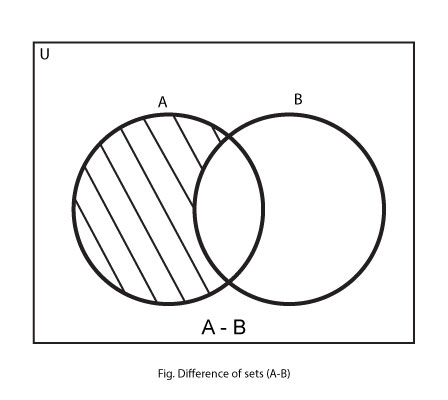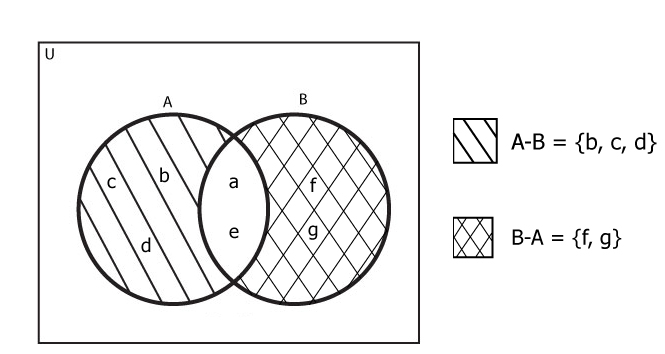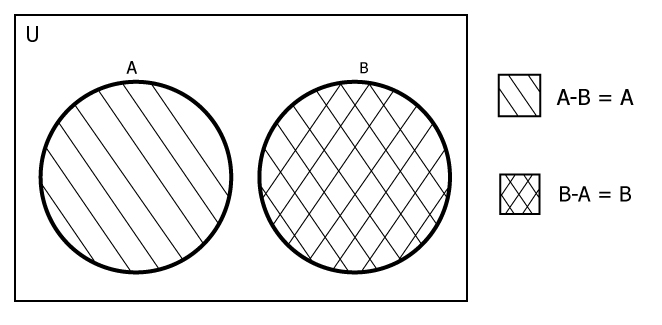Difference in Set A and Set B or the difference of Set B from Set A, it’s represented by A-B. It’s the set of all elements of set A that in Set B are not present. Mathematically, it is given by:
A-B = { x: x∈A and x∉B}

If in the condition, (A∩B) refers to an intersection between Set A and Set B then,
A-B = A – (A∩B)
Example of Difference of Sets
Example 1:
If A = { a, b, c, d, e }; B = { a, e, f, g}, then, find A-B & B-A.
Solution: Elements present in A only are b, c, d; Also, elements present in B only are f, g. Therefore,
A-B = {b, c, d}
and B-A = {f, g}

Credit: mathstopia.net
Note: A-B might not have equal to B-A.
Example 2:
If A = { 1, 2, 4, 6, 8} is given along with A-B = {1, 6, 8}, then Find A∩B
Solution: (A∩B) – A intersection B, is the Set of all the elements present commonly in both the sets A and B. Therefore,
A∩B = A – (A-B)
or, A∩B = {2, 4}
The Identities Which Involves Difference of Sets
- If both Set and Set B are equal, then A-A = A-B = ϕ (empty set)
- In the condition, when the empty set is deducted from, suppose Set A then, as a result, it’s that set itself, that is, A – ϕ = A.
- When a set is deduced from the empty set then, it appears in the form of Empty Set, that is, ϕ – A = ϕ.
- When the SuperSet is deducted from the subset, then, it results in the Empty Set, that is, A – B = ϕ, in the condition when A ⊂ B

If Disjoints sets A and B are there, then, two conditions will occur:
- A-B = A
- B-A = B

Taking Another Example of Difference of Sets
Question: Find B − A
Solution:
Note: This time you’ll be looking for everything you’ll see in only B.
Elements which are present in only B are depicted below in bold
Let A = {1 orange, 1 pinapple, 1 banana, 1 apple}
Let B = {1 orange, 1 apricot, 1 pinapple, 1 banana, 1 mango, 1 apple, 1 kiwifruit }
Hence, B − A = {1 apricot, 1 mango, 1 kiwifruit}